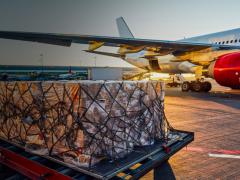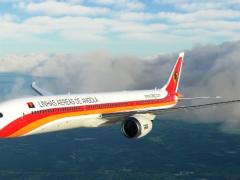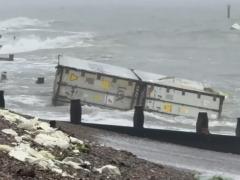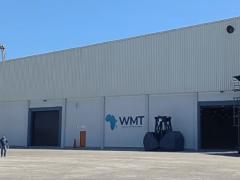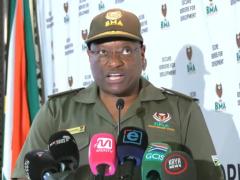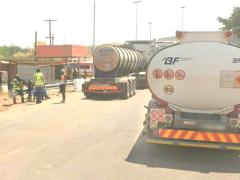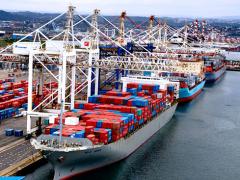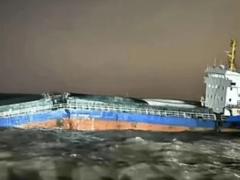Waterside container handling at South Africa’s ports remains on an upward curve following last week’s benchmark figure of 101 295 twenty-foot boxes moved in a week – the first time Transnet Port Terminals (TPT) broke through the seven-day barrier since 2017/18.
The latest data reported by the South African Association of Freight Forwarders (Saaff) and Business Unity SA (Busa), shows that the daily average increased from 12 242 to 14 470 TEU, heralding a 16.47% week-on-week improvement.
Saaff head of Research and Development, Dr Jacob van Rensburg, said sustained above-average performance was coinciding with ongoing weather challenges.
As a result of adverse conditions and equipment breakdowns and shortages, vacant berths prevented optimalisation of TPT’s waterside capacity through the country’s port network.
“Specifically, inclement weather constrained operations at the Port of Cape Town, while the main operational challenges in Durban proved to be continuous equipment breakdowns and adverse weather,” Saaff and Busa Container Movement Update (CMU) said.
On top of weather and berthing challenges, the Eastern Cape’s ports had also been affected by agent delays, said the CMU. “However, minimal delays were reported at the Port of Richards Bay.”
Coega also continues to perform well as a deepwater alternative with bypass sailings reported for the 3 700 TEU MSC Nahara and 5 500 APL Holland, skipping Durban and Cape Town respectively upon departing and calling at the Port of Ngqura.
Rail freight capacity at the Port of Durban also features in the latest CMU.
“The latest reports from Transnet Freight Rail (TFR) indicate that the annual shutdown on the line between Pretoria and Durban commenced on Monday (21 July) and will continue for the next week.
“Additionally, TFR reported a derailment near Dassenhoek, Durban, recently. The latest reports suggest that the whole Container Corridor (ConCor) line will be affected until Monday afternoon around 4pm.”
Disruption of the ConCor line comes at a time when road-to-rail discussions are once again in the public domain.
Last week Durban Container Terminal chief executive Earle Peters said there was a real need for moving more cargo on to rail.
Mike Daniel, CEO of Rail Runner South Africa, said current movement levels at the Port of Durban could be easily sustained through the use of multimodal inland facilities such as the Cato Ridge Inland Port.




